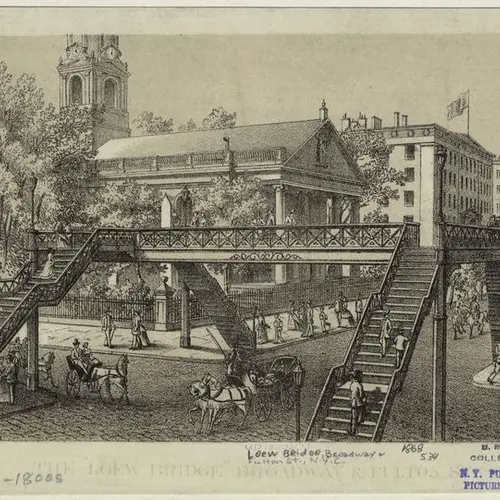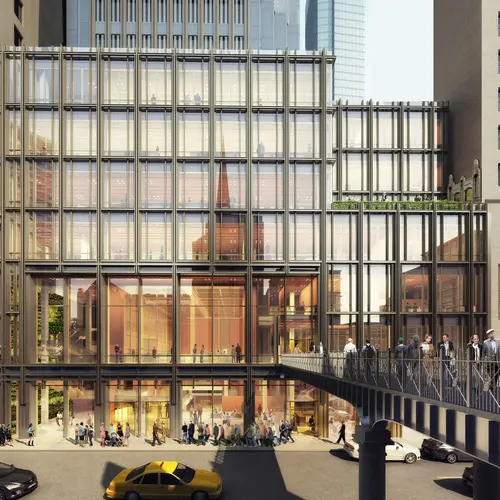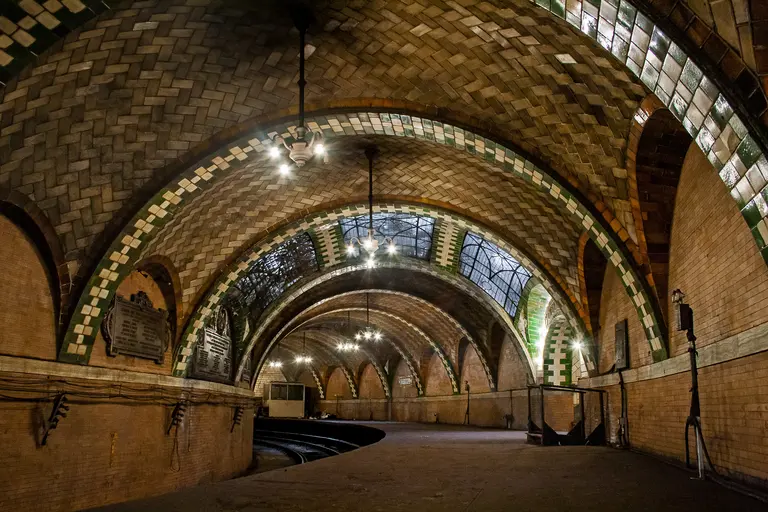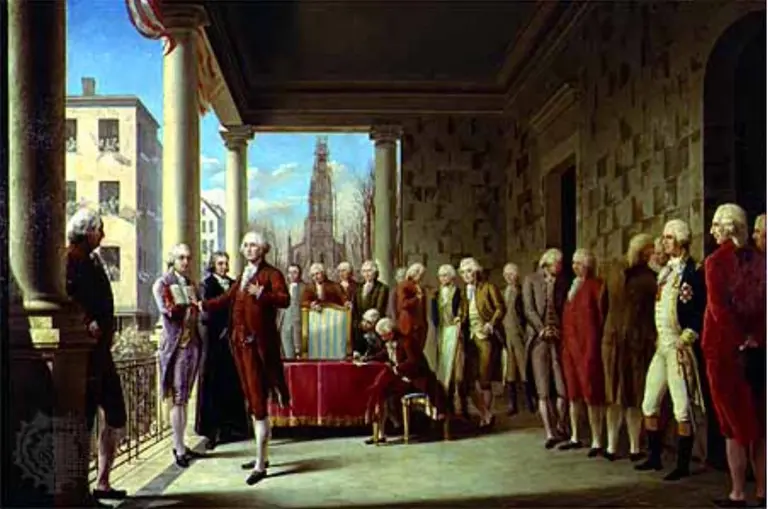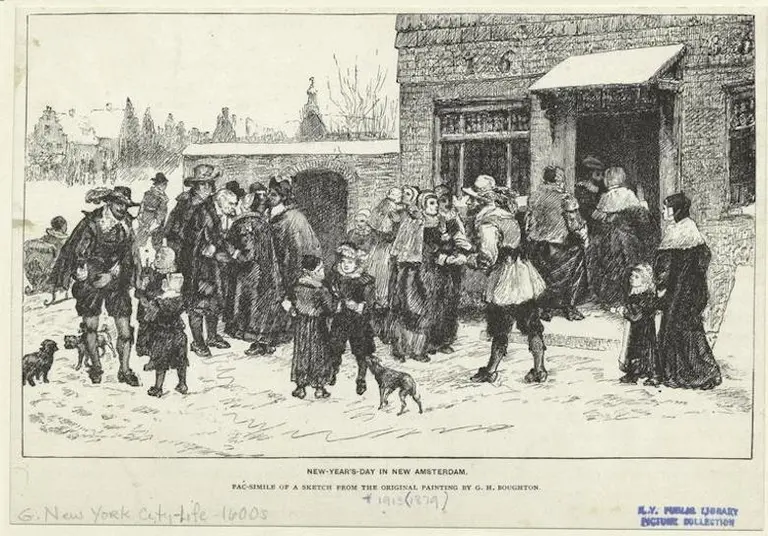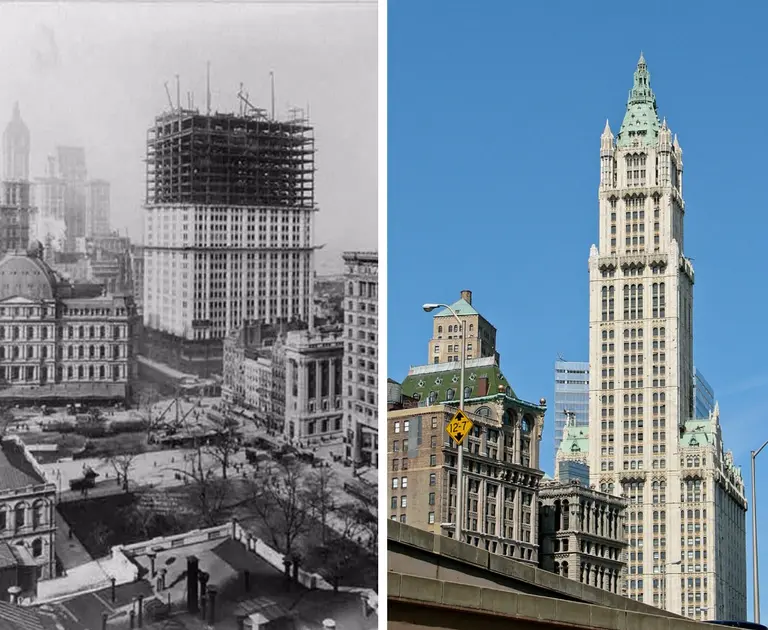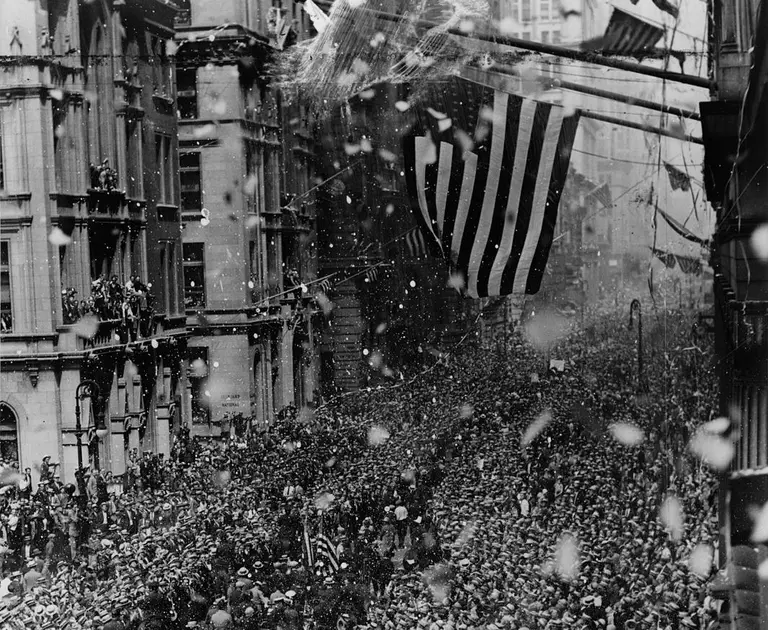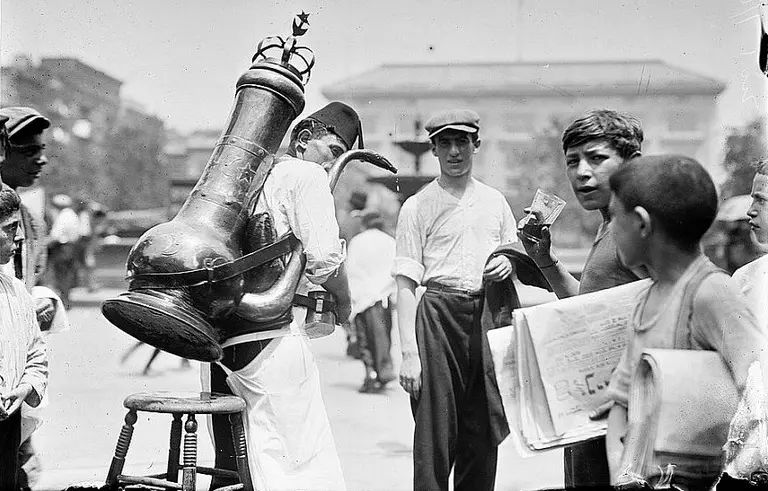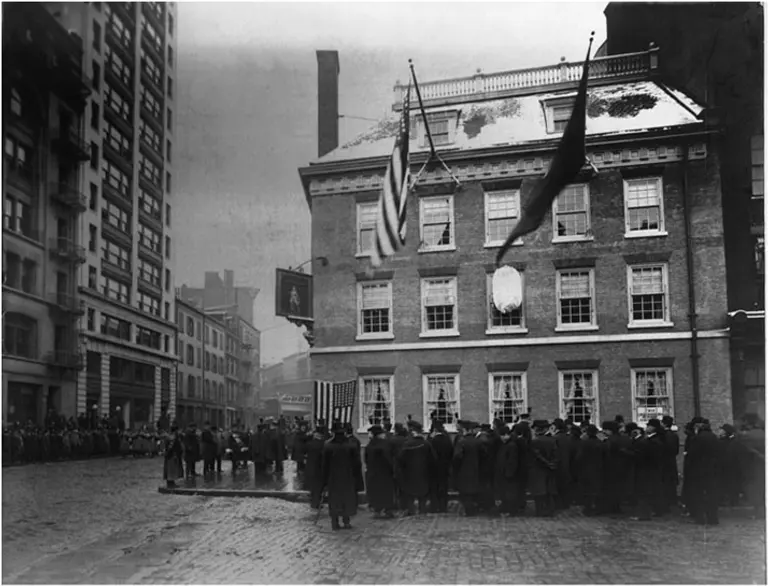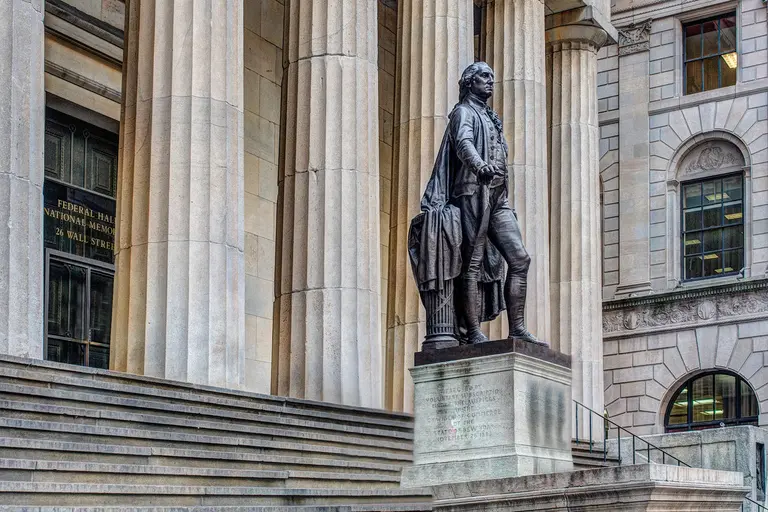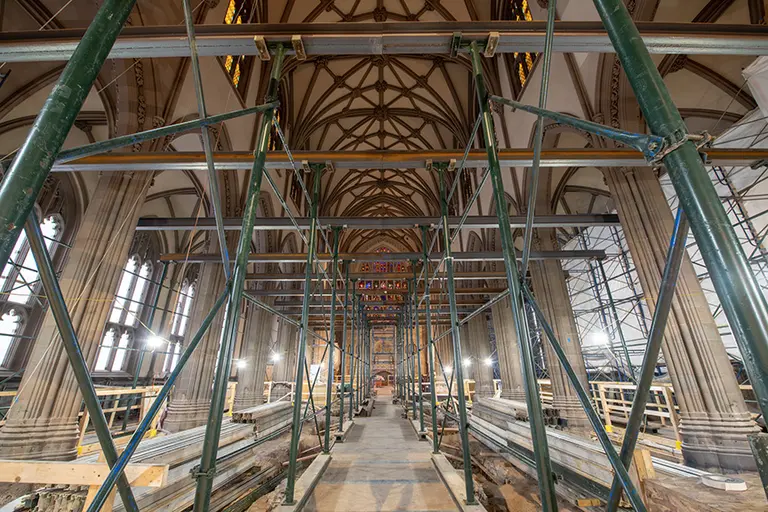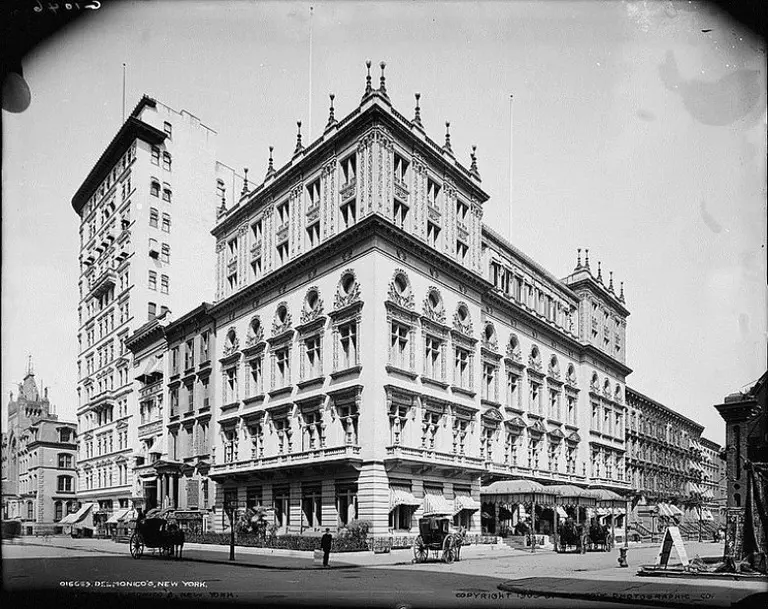In 1867, this lost Broadway bridge caused a feud between two hat shop owners
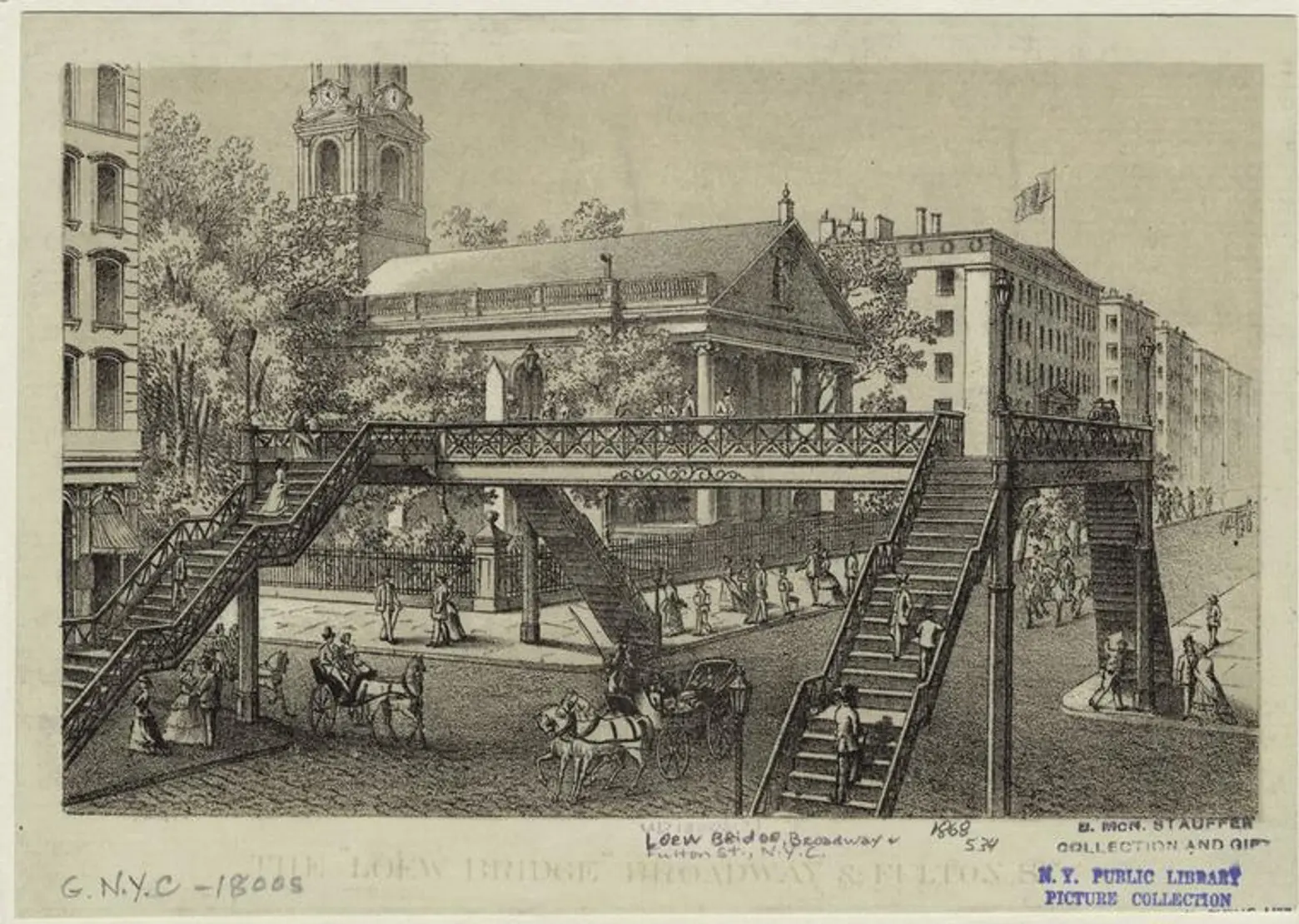
Loew Bridge ca. 1868, via NYPL
Lower Broadway is the city’s oldest thoroughfare and has always been one of the busiest. In fact, in 1867, the intersection of Broadway and Fulton Street was “continually thronged with vehicles of all kinds, rendering it almost impossible for pedestrians to pass.” Without the benefit of traffic lights, the crush of traffic was so snarled and thick that policemen had to untangle the flow during business hours so pedestrians could cross. Concerned that the sheer mortal hazard of simply crossing the street was losing him business, nearby hat shop owner Philip Genin convinced the City to build a bridge across Broadway that would ease foot traffic and just so happen to deliver pedestrians safely to his shop.
And so was built the ornate cast-iron Broadway Bridge, named for Charles E. Loew, City Comptroller. Opened in April 1867, spanning Broadway at Fulton Street, Loew Bridge brought “relief to Broadway.” No longer did New Yorkers have to walk from Liberty to Wall Streets before being able to cross Broadway. No longer did would-be street-crossers run “the risk of being covered in filth.” No longer did they shop exclusively at Charles Knox hat shop at 212 Broadway.

While the hatter Philip Genin had prevailed upon the City to build the bridge, his fellow hatter, and arch-rival across the street, Charles Knox, forced the city to tear it down. Knox alleged that the bridge was blocking light and air in front of his shop and throwing his wares into darkness. The aggrieved milliner literally threw his hat in the ring, suing the city for $25,000 in damages. As a result of the lawsuit, the city pulled the bridge down in 1868, less than two years after it first opened.
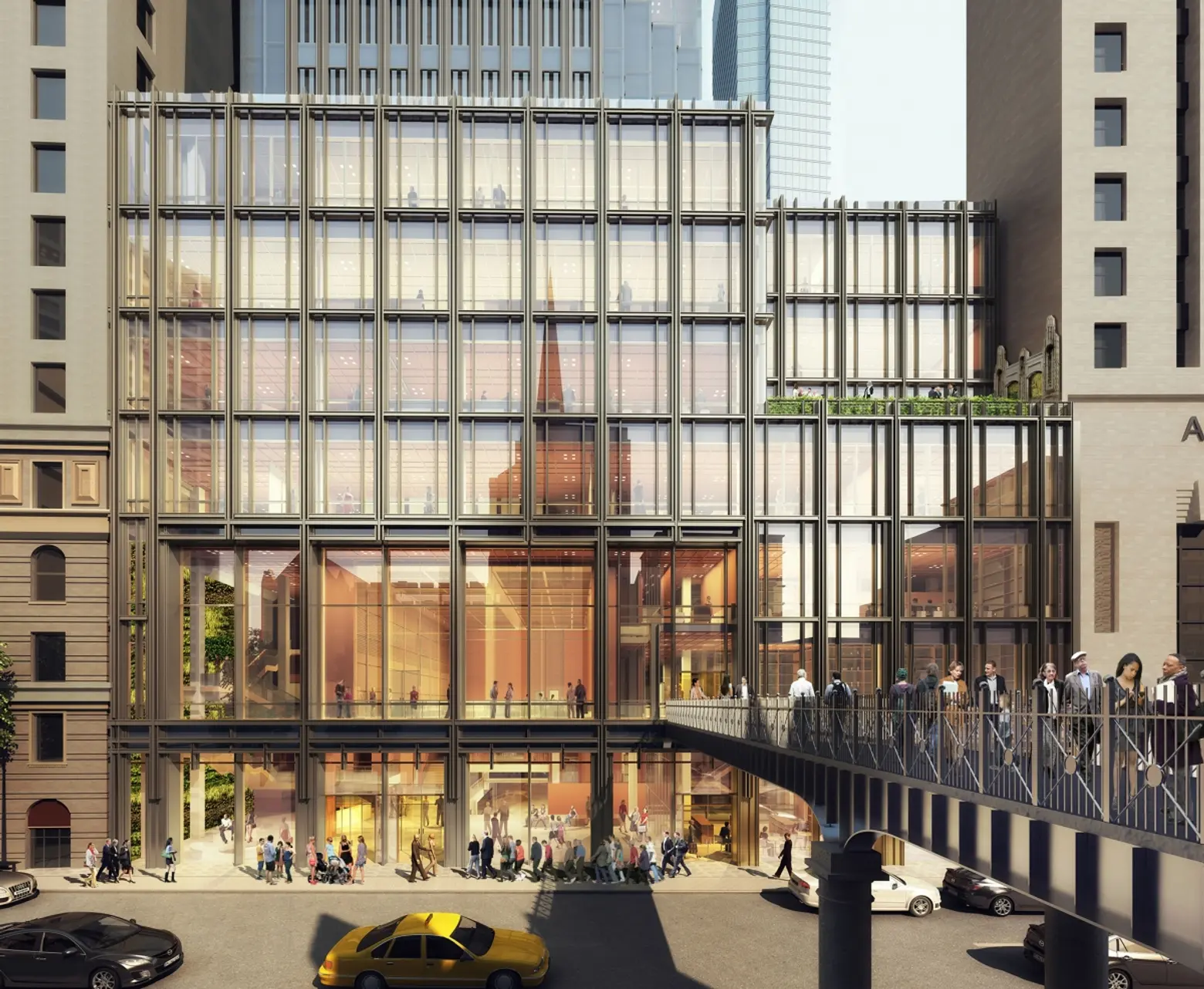
Rendering of Trinity Church’s new Parish Hall at 76 Trinity Place, Showing Trinity Bridge, via Trinity Church
Loew Bridge was a short-lived respite for harried pedestrians, but it inspired Trinity Church, that perennial pillar of Lower Broadway, to build a similar bridge for its parishioners. In 1989, Trinity Church commissioned Trinity Bridge to span Trinity Place between the church and the parish hall. Today, with construction underway on Trinity’s new parish hall, the bridge waits, nearly 20 feet in the air, for its newest connection.
RELATED:
